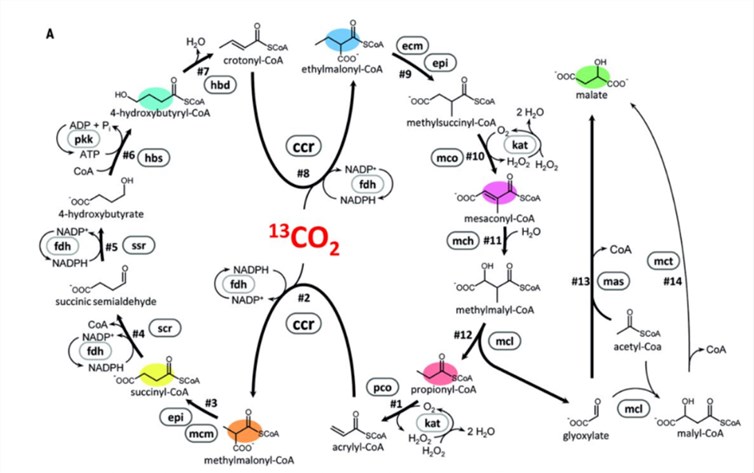The dramatic increase in the world's population means that more food is needed to feed the global population. In contrast, factors such as frequent global climate extremes, decreasing arable land area, and soil pollution caused by the overuse of chemical fertilizers pose many challenges to agricultural production. Therefore, it is essential to provide innovative solutions to address bottlenecks in agricultural production.
Based on the urgent needs of agricultural development, Lifeasible has been building and designing new anabolic pathways in plants based on the close integration of synthetic biology and plant metabolic engineering, aiming to provide a wider range of design ideas and operational possibilities for improving plant growth and crop yield. Our in-depth research in plant anabolism, continuous design, and optimization of plant anabolic pathways have shown essential applications in the field of anabolic research in the field of agricultural research.
 Fig.1. CETCH cycle. (Schwander T, et al., 2017)
Fig.1. CETCH cycle. (Schwander T, et al., 2017)
Agricultural yield is mainly affected by light energy capture efficiency, conversion of light energy to biomass, and harvest index. While light energy capture efficiency and harvest index have reached their biological limits, the conversion efficiency is currently shown to be only 20% of the theoretical maximum, so increasing plant conversion efficiency will hopefully increase agricultural yield. We have optimized and redesigned carbon metabolism through the development of anabolism and the use of new synthetic pathways for improving the conversion of light energy to biomass, effectively helping to improve plant growth.
We use modern engineering principles of biological systems based on modular genetic components and mathematical models to guide the design and characterization of quantitative functions of individual components to assemble and construct synthetic biological systems that help improve plant growth through anabolism.

Lifeasible is committed to providing innovative solutions to increase agricultural productivity. We achieve higher crop yields by maximizing plant structure and photosynthetic utilization with our advanced technology platform and experienced team of expert technicians; we aim to provide the highest level of customer satisfaction. If you are interested in us, please feel free to contact us.
Reference